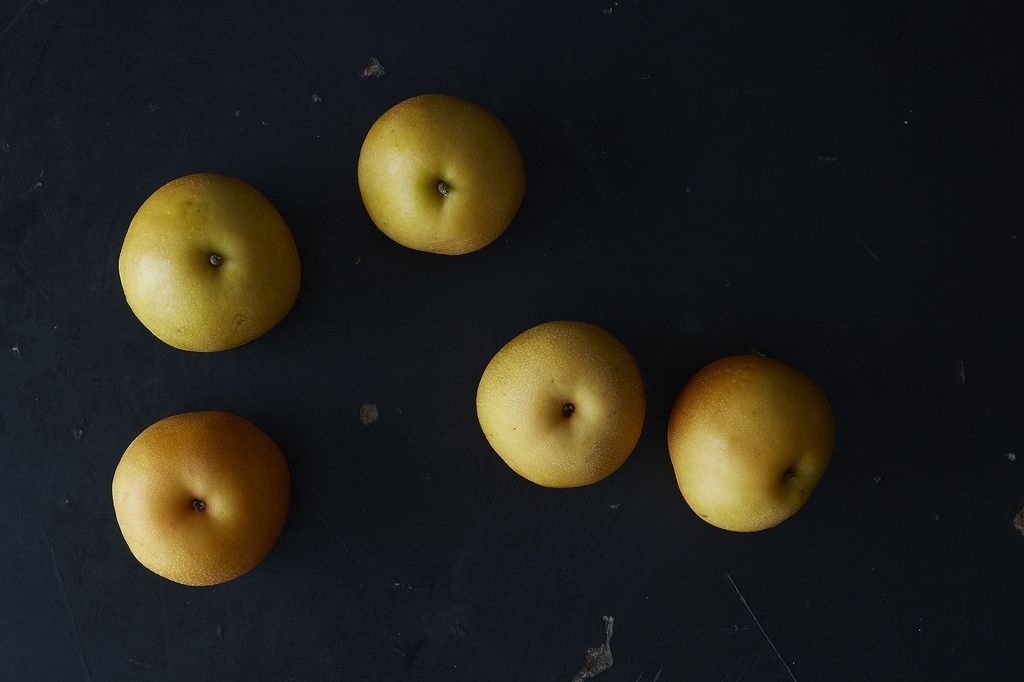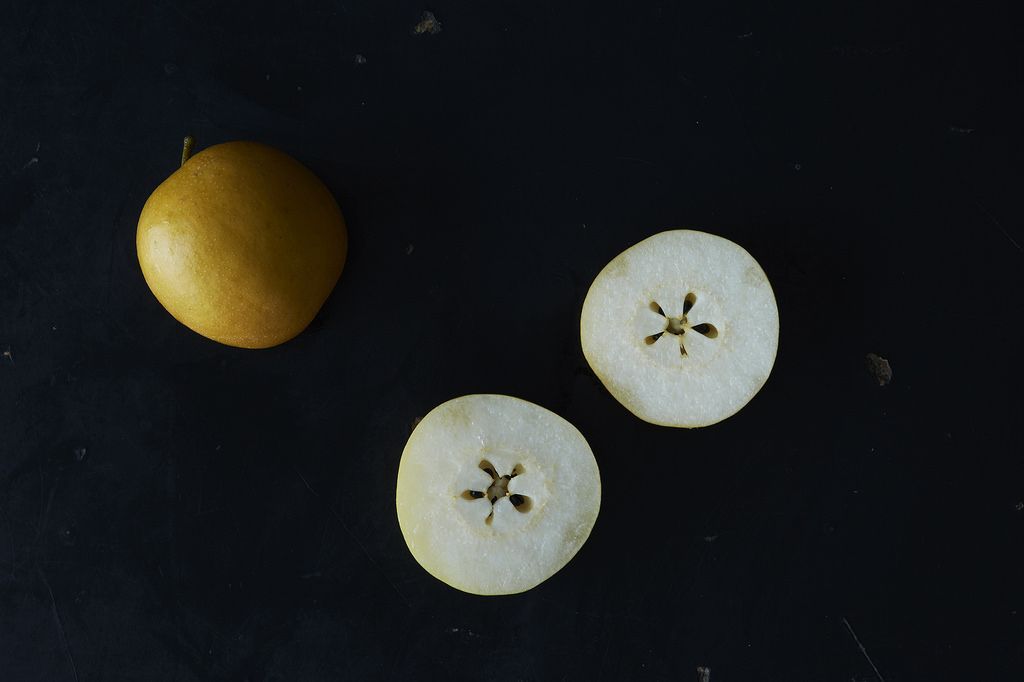Asian Pear
Everything You Need to Know About Asian Pears (& 10 Ways to Use Them)
If it's shaped like an apple and crunches like an apple, then it must be ... a pear.
Popular on Food52
11 Comments
Sharon W.
October 31, 2024
I have an Asian pear in my back yard and I love them but my parrot really loves them. This year I’m going to try freezing some for her. Fingers crossed 😊
Steve
July 6, 2019
When I have a neighbor that feeling blue, I make a casserole with these and tater tots. Nothing helps to brighten their day like tots and pears.
Corj
July 6, 2019
I dice them roughly, sautee to render some juices and use them along with candied ginger in autumnal scones.
Mara
October 6, 2014
I like to cube my asian pears and sautee them in a bit of butter before adding them to some fried rice with bacon and chinese sausage and whatever else is in your fridge! Sweet and salty and delicious!
jane.coombs88
October 4, 2014
Also known as the Bachelor's fruit. in many refrigerators in Asia that and a bottle of water is all you find.
Andrea E.
October 4, 2014
I dehydrate them when I get them from the orchard, great snacks and I have them through out the winter if I don't finish them to fast
AntoniaJames
October 4, 2014
I realize that you only link recipes that have been photographed by Food52 or contributors to columns. May I recommend pierino's excellent flank steak recipe: https://food52.com/recipes/13423-mysteries-of-korea-town-kalbi-style-flank-steak In my opinion (and that of everyone who's been served this on my deck, which is a lot of people, because it's been a go-to summer party recipe for me since it was first published), you'd be hard pressed to find a better marinated steak, anywhere.
Also, Pear and Vanilla Aigre-Doux from Paul Virant's "The Preservation Kitchen." Best pear pickles (for processing) ever. Other pear varieties, even ones that start out firm, tend to get too mushy for my taste when canned. ;o)
Also, Pear and Vanilla Aigre-Doux from Paul Virant's "The Preservation Kitchen." Best pear pickles (for processing) ever. Other pear varieties, even ones that start out firm, tend to get too mushy for my taste when canned. ;o)
Paul H.
October 4, 2014
I slice Asian pears very thinly on a mandoline and layer them over a sheet of puff pastry for an easy galette. A quick brushing of melted butter, a sprinkle of crunchy sugar like demerara, maybe a little cinnamon and 20 minutes in the oven: wonderful.




See what other Food52 readers are saying.